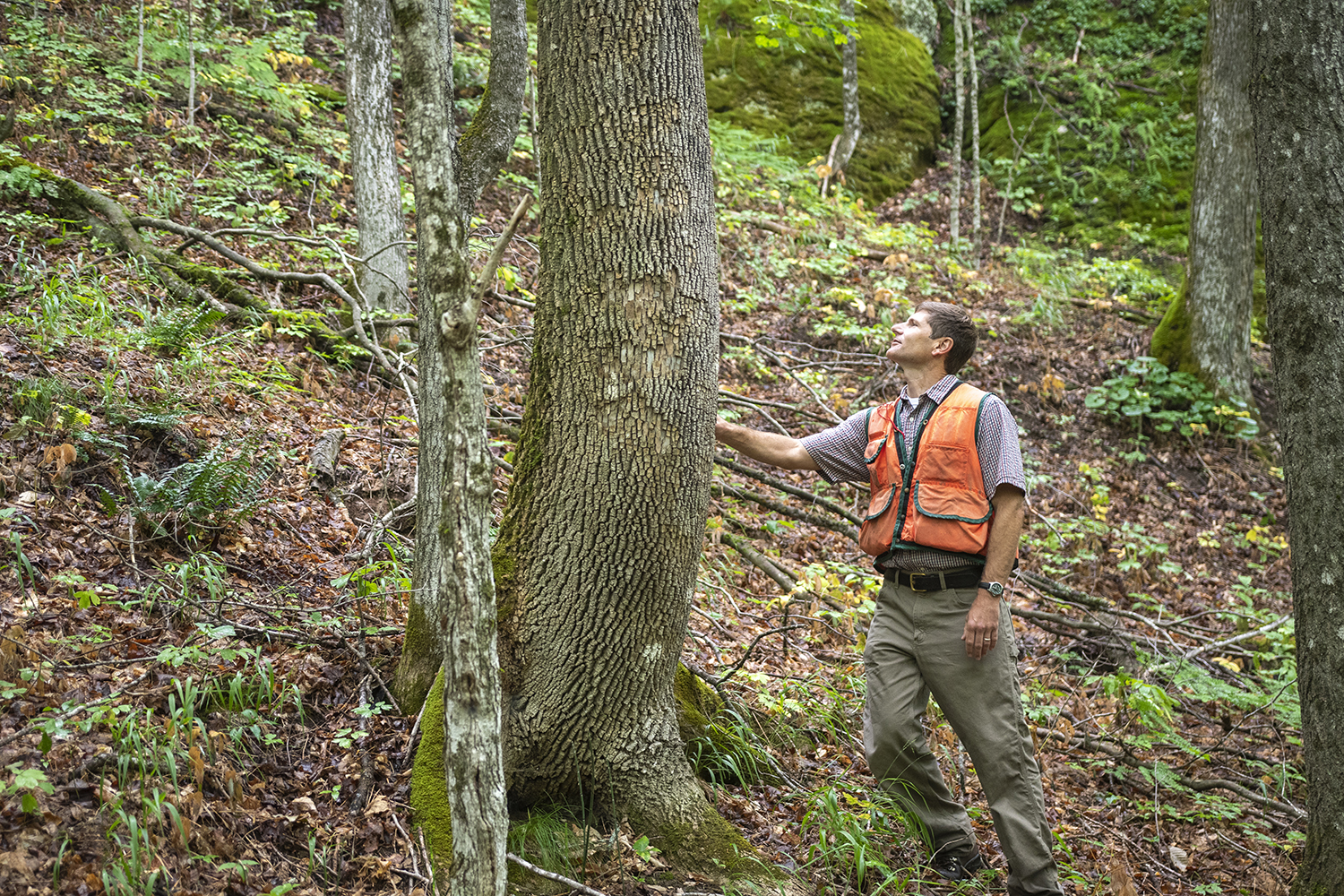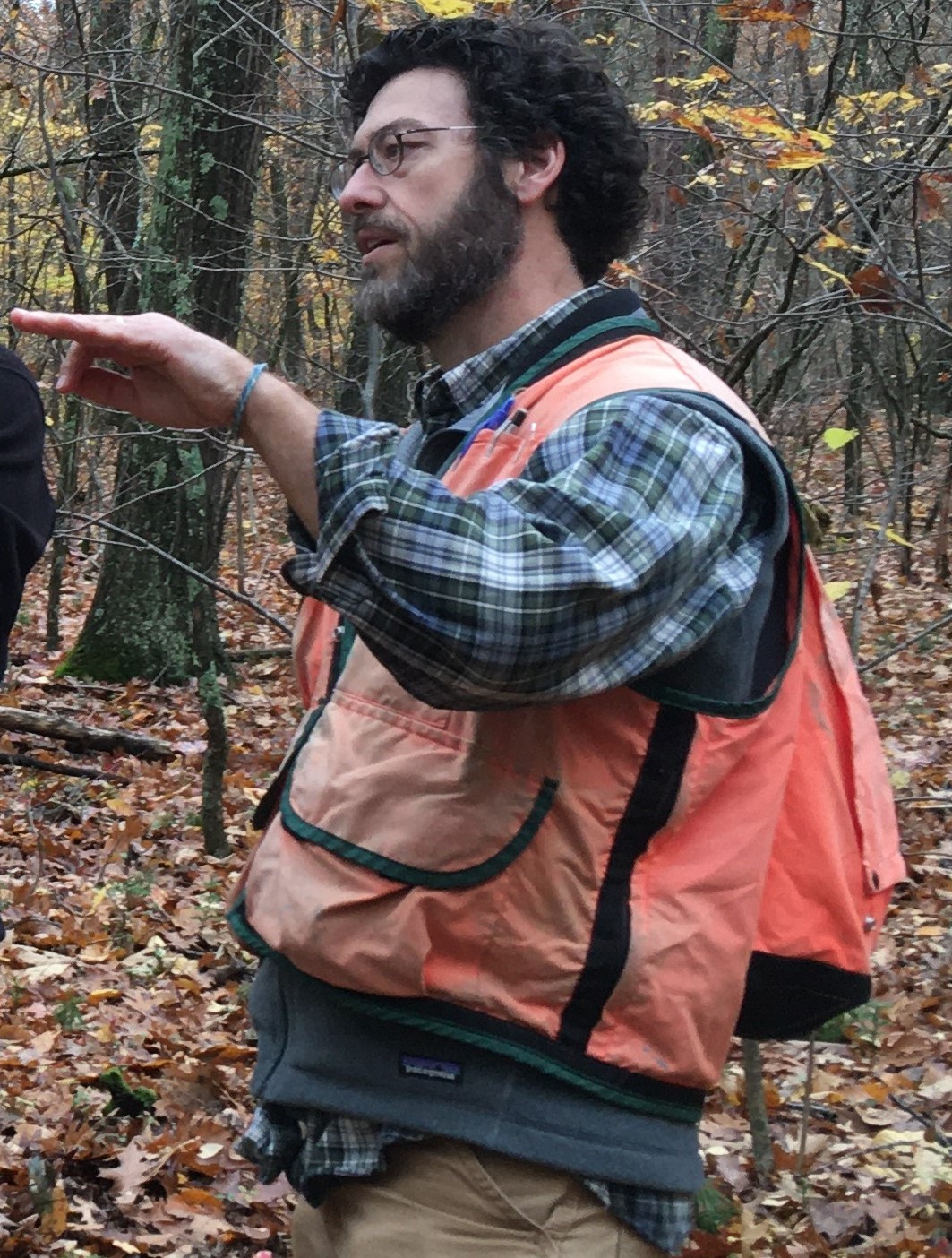New Outreach Publication On Restoring Old-Growth Forest Conditions
By Tony D’Amato, CF, and Paul Catanzaro
February 28, 2023
Originally published in The Forestry Source - January 2023 issue
My colleague Paul Catanzaro and I recently had the opportunity to create a
pamphlet on restoring old-growth characteristics in our region. It is an updated look at options for restoring old-growth characteristics to the northeastern US that builds on early outreach publications we developed on the topic in 2007 and 2010. At the time we developed those earlier publications, the main area of emphasis was the value of restoring these conditions for maintaining biodiversity in the region. Recent interest in adapting forests to global change, as well as maximizing carbon benefits, has generated a renewed focus on creating conditions found in old-growth forests given their compatibility with structural and compositional characteristics that may confer adaptation potential and increase carbon storage. We were approached by Vermont Land Trust and Vermont Forests, Parks and Recreation to update these earlier guides with an eye towards these emerging objectives and growing interest by landowners, foresters, and policymakers in restoring old-growth conditions.
 Background
Background
It wasn’t until the early 2000s at Oregon State University where I experienced the idea of restoring old-growth forests to second-growth systems as a heavy area of emphasis with managers, particularly on public lands. When I came back to New England to do my PhD work at University of Massachusetts, I had an interest in trying to apply similar ideas about old-growth restoration to this region, but was ignoring a key detail: the people who actually own the majority of forestland. This is where our partnership comes in.
Dave Kittredge was a tremendous mentor to both Paul and me and devoted his career to demonstrating the importance of connecting with family forest owners (FFOs) to effect change on the landscape. We recognized there was a growing group of FFOs in Massachusetts that wanted to manage for old-growth forests. Many stated their intent was to not do any management to their 85-year-old second-growth forests to achieve these goals, which was missing the potential for applying ecological silviculture to accelerate the development of old-growth characteristics. Using the incredible skills Paul shares with Dave in connecting with and understanding landowners, we developed outreach materials that summarized the concepts and approaches being recommended by individuals like Bill Keeton for restoring old-growth characteristics to New England forests, but to the audience that would have the most impact on the ground: FFOs.
Old-Growth Meets Modern Demands
Our primary goal with this publication, “
Restoring Old-Growth Characteristics to New England’s and New York’s Forests,” was to provide an updated, regional look at the characteristics of old-growth forest systems in New England and New York and the associated silvicultural strategies and conservation tools for ensuring those conditions develop in the future on a diversity of ownerships. We also highlighted places where there was synergy between restoring old-growth conditions and achieving emerging objectives associated with adaptation and carbon. Finally, we hoped to remind the broader public, landowners, and foresters now just intersecting with concepts of old growth about the large body of science and knowledge developed on this topic over the past century plus. This science has been central to informing our understanding of what old growth is (and isn’t) and what management strategies emulate and restore the dynamics and conditions shaping these forests for millennia.
Old growth has, once again, become a highly politicized issue given the global recognition of the value of older forests in storing carbon and serving as part of regional, national, and global natural climate solutions. This politicization has both increased interest in protecting areas that already contain old-growth forests, but also generated a lot of confusion over what old-growth forests are, the characteristics defining them, and the best ways to increase those conditions across the landscape. This pamphlet summarizes the current state of knowledge around old-growth forest ecosystems in the northeastern US and presents different strategies ranging from passive (no management) to active management for restoring old-growth characteristics to highly simplified forests, such as those dominating much of New England and New York.
There are certainly scientific publications and even textbooks that cover the ecology of old-growth forests and silvicultural strategies for restoring old-growth characteristics; however, those are largely inaccessible for most landowners and practitioners. Our goal with this publication was to fill a need for a relatively compact summary of the basics of old growth with enough detail to inform management and conservation strategies, but without being overly prescriptive (i.e., allow the art and science happen on the ground through the creativity of foresters, landowners, and conservation organizations).
 Words Matter*
Words Matter*
A widely accepted definition of old growth has been forests free of impacts by intensive human land use, which is a very rare condition in most parts of the world. One thing that struck us when revisiting that definition is how it ignored the role of Indigenous people in shaping forests long before the intensive land uses associated with European settlement irrevocably changed the conditions of forests in the US. Given Indigenous practices, like cultural burning and gathering of plants for medicines, foods, and ceremonies, are largely viewed as harmonious with the natural ecology of the forests in our region, we opted to modify the historic definition of old growth to acknowledge these forests had a history of Indigenous use.
There was much confusion over what old growth was, as there are now terms like “old forest” and “mature forest” being used as synonyms for old growth (unfortunately). We opted to avoid the term “mature forest” in the document given that is very much historically tied to economic criteria, but did work to provide tangible structural benchmarks that would need to be reached before equating a given second-growth forest with old-growth forest. Definitions matter and it is critical we are all speaking the same language when navigating this renewed emphasis on old-growth ecosystems.
Conclusion
Our publication is intended for the many decision-makers of these diverse ownerships, including family forest owners, public and private foresters, conservation organizations, and municipal officials. The goal of this publication is to increase the amount of old-growth characteristics in our forests by giving these decision makers the information they need to adopt old-growth restoration strategies in ways that complement their ownership goals, helping to sustain our native forests and their many benefits. We would love to hear about the experiences of foresters implementing these strategies.
Tony D’Amato is a professor of silviculture and director of the forestry program at the University of Vermont. A PDF of the publication can be downloaded at www.masswoods.org/old-growth. To request a free hard copy(ies), email [email protected]. Paul Catanzaro is a professor in the forestry program at University of Massachusetts, serves as the State Extension Forester, and is Co-Director of the Family Forest Research Center.
*On April 22, 2022, the Biden Administration signed Executive Order 14072—also known as “Strengthening the Nation’s Forests, Communities, and Local Economies”—which set the stage for a number of forest-centered policy initiatives. Within EO 14072, Section 2(b) specifically calls on the Secretaries of Agriculture and the Interior, within one year, to define, identify, and complete an inventory of old-growth and mature forests on federal lands. As the agencies near a final decision on defining these complex terms, SAF continued its education efforts with the release of a one-page briefer titled “Defining Mature and Old Growth.” This briefer will help to educate staffers, decisionmakers, and government leaders on science-based definitions of mature and old growth as well as climate-smart strategies for conservation.